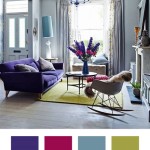Best Sofa Color For a Small Living Room
Choosing the right sofa color can significantly impact the perceived size and atmosphere of a small living room. A carefully selected hue can create the illusion of more space and enhance the room's overall aesthetic. This article explores various sofa color options and their effects on small living spaces, providing guidance for making an informed decision.
Light and Neutral Colors
Light and neutral colors are often the preferred choice for small living rooms. Shades like white, cream, beige, and light gray reflect light, making the space feel brighter and more open. These colors create a sense of airiness and prevent the sofa from visually dominating the room. They also offer versatility in terms of décor, as they can be easily paired with various accent colors and patterns.
While white sofas offer a clean and modern look, they can require more maintenance due to their susceptibility to stains. Beige and light gray offer a softer, warmer alternative while still maintaining the light-reflecting properties that enhance the sense of space.
Cool Tones
Cool tones, such as light blues, greens, and lavenders, can also work well in small living rooms. These colors tend to recede visually, creating a sense of depth and making the room appear larger than it is. Light blue, in particular, can evoke a sense of calmness and tranquility, making it a suitable choice for creating a relaxing atmosphere.
When opting for cool tones, it's crucial to consider the room's lighting. In rooms with limited natural light, cooler colors can sometimes appear dull. Pairing cool-toned sofas with warm-colored accents and ample artificial lighting can help balance the overall aesthetic.
Bold Colors in Small Spaces
While light colors are generally recommended for small spaces, bold colors can also be incorporated effectively with careful consideration. A brightly colored sofa can serve as a statement piece, adding personality and vibrancy to the room. However, it's essential to choose a bold color that complements the overall décor and doesn't overwhelm the space.
When using a bold color for the sofa, keeping the rest of the room's palette relatively neutral is recommended. This allows the sofa to stand out without creating a cluttered or visually overwhelming environment. Additionally, incorporating lighter accents and accessories can help balance the boldness of the sofa and maintain a sense of airiness.
Consider the Room's Lighting
The amount of natural light a room receives plays a crucial role in how colors appear. In rooms with ample natural light, a wider range of colors can be successfully incorporated. However, in rooms with limited natural light, lighter colors are generally preferred as they help maximize brightness and prevent the space from feeling closed in.
The type of artificial lighting also influences color perception. Warm lighting can enhance warm tones while making cool tones appear duller. Cool lighting, on the other hand, can enhance cool tones but may make warm tones appear washed out. Careful consideration of both natural and artificial lighting is essential when selecting a sofa color.
Fabric and Texture
The fabric and texture of the sofa also contribute to its visual impact. Smooth fabrics, such as leather or microfiber, tend to reflect light more effectively than textured fabrics like velvet or chenille. While textured fabrics can add visual interest, they may also absorb more light, making the sofa appear slightly darker.
Choosing a sofa with legs can also create the illusion of more space, as it allows light to flow underneath the furniture. This can be particularly beneficial in small living rooms where maximizing visual space is important.
Matching with Existing Décor
The sofa color should harmonize with the existing décor of the living room. Consider the colors of the walls, flooring, and other furniture pieces when selecting a sofa color. A cohesive color palette creates a sense of unity and prevents the room from feeling disjointed.
If the walls are painted in a neutral color, a wider range of sofa colors can be incorporated. However, if the walls are painted in a bolder color, choosing a sofa in a complementary or neutral shade is often recommended to maintain balance.
Selecting the right sofa color for a small living room requires careful consideration of various factors, including the room's size, lighting, and existing décor. By understanding the impact of different colors and textures, one can choose a sofa that enhances the space and creates a comfortable and inviting atmosphere.

The Ultimate Guide To Choose Best Sofa Color For Your Living Room

20 Best Sofas For Small Living Rooms Plus Expert Advice

How To Choose The Right Sofa Color In 7 Easy Steps

What Is The Best Sofa Color For Your Family Room Zin Home

5 Best Colours For Small Living Rooms

How To Choose The Best Sofa Color For Your Living Room Urban Ladder

12 Most Popular Sofa Colours In 2024 The Best Colour

25 Trending Colorful Sofa Sets You Can T Miss In 2024 Latest Set Designs For Living Room

Sofa Colour Combinations Elevate Your Space Designcafe

Vibrant Trend 25 Colorful Sofas To Rejuvenate Your Living Room Decoist








